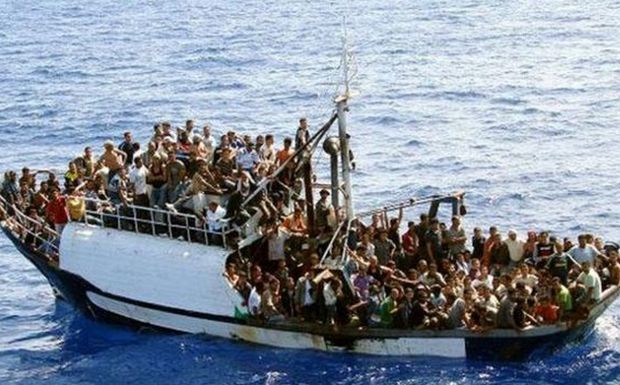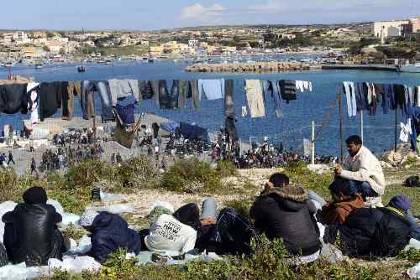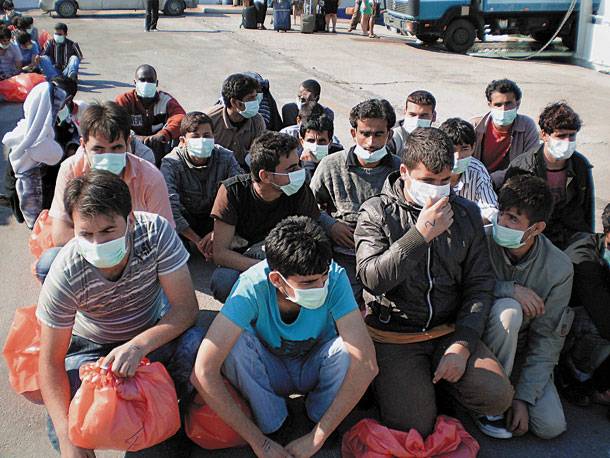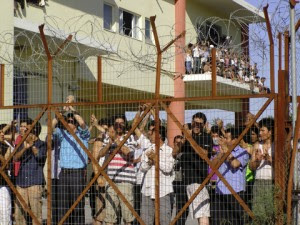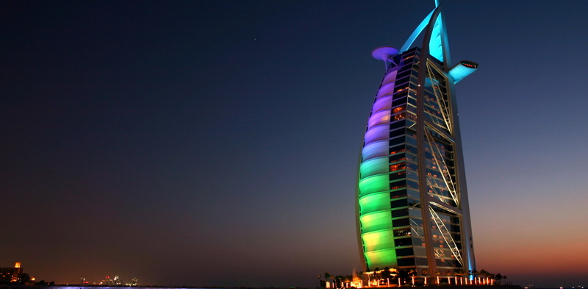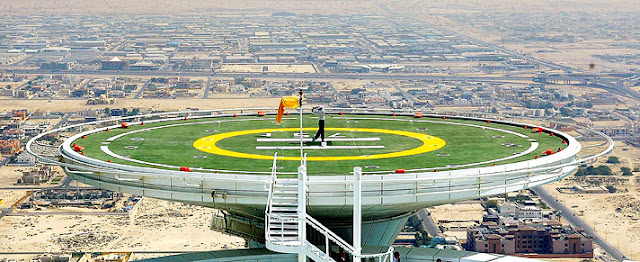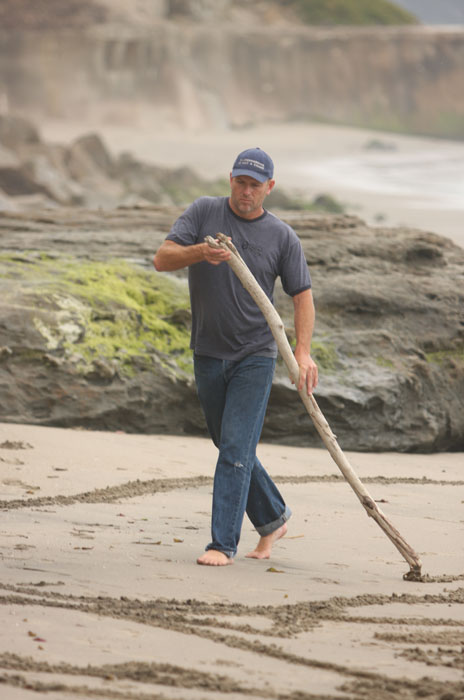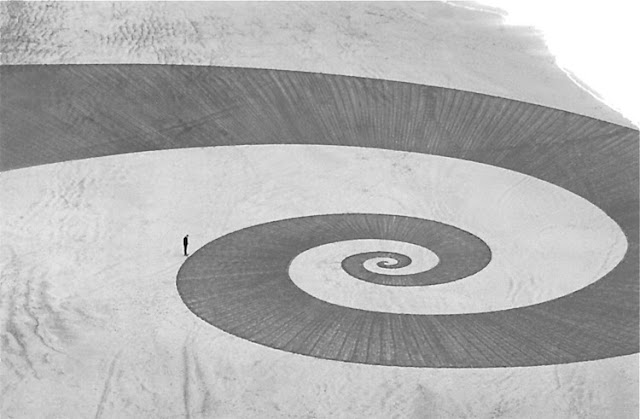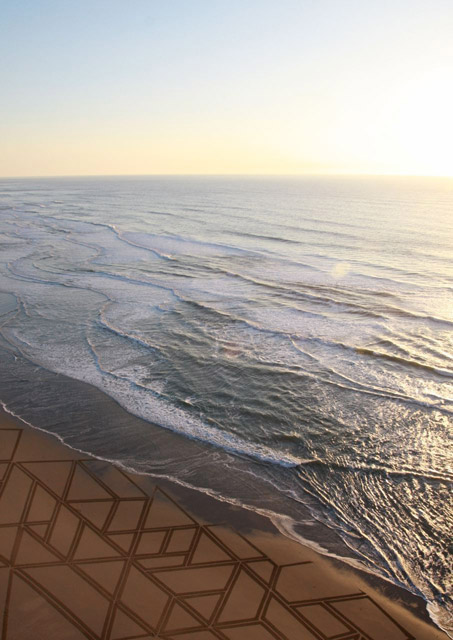by Michael Balaroutsos architect
In March 2010, I read one post in the most favorite blog to me life without buildings about to the emerging architecture in a place where apply, general quarantine.
In Europe the last decades, lived several statements where the quarantine would be necessary.With relevant numbering of the events to remember Chernobyl,swine flu, the bird flu, and many other diseases you might not know yet, but with the huge wave of illegal immigration becomes imperative to taking serious measures of protection.
Specifically at the sites for the DETENTION OF person arrested directly in doubts GHETTO.
Perhaps the article published by the blog, should seriously read it the relevant Ministries of the countries which encounter this kind of problems.
Because in emergency situations, needs also to safeguard more than all humanity, the legal systems, and public health.
Only accidental can not be be some news that pass as indifferent, but it is very serious and happening all over the world.
Newsflash.........
Australia: "explosive" situation in the detention of illegal immigrants
In high-security cell in jail, but without being prosecuted against the detained are regarded as leaders of the riots in the detention of illegal immigrants Vilagount.
At the same time three asylum seekers continue for the sixth day of protest on the roof while the riots and now extended the detention center Kertin of Western Australia, where asylum seekers are on hunger strike and the situation is "explosive."
In recent months, violent demonstrations erupted in several detention centers for illegal immigrants in Australia and have become common for most suicide attempts. Inmates complain of poor living conditions and the long time required to test their applications.
Greece: The big problem of Patras
The port of Patras is the main hub connecting to Italy via ferry line and thus is the main gateway from east to west. The illegal immigrants coming from Afghanistan or Somalia as soon as possible and choose a safer way for the countries of Europe, two ports in western Greece, Igoumenitsa and Patras. The port of Patras because of several routes to Italy, but the lack of storage is the attraction of the majority of illegal immigrants. The main goal is to reach those in Germany, the Netherlands or Sweden [. These groups of illegal immigrants strengthen the "head traders, who then large cash payment, taking them pass the border and bring them to Western countries. The process by which they pass in central Europe is as follows. After crossing the Greek border, in Patras and through intermediaries, or hide themselves in trucks to be dropped off at one of the ships of the line towards Italy. Sometimes the trucks contain specific caches so as not be perceived by the authorities. It should be noted that the main route of entry to Greece is the Aegean Islands and the Ebro.
The first groups of Kurdish immigrants occurred in 1996 and was caused by the war in Iraq and the persecution faced by the Turkish state. Indicative of this is that from 1995 until November 1997 calculated according to the ministry of public policy to have entered Greece illegally 22,451 Iraqi nationals. But the problem in Patras surged after 2001 and the invasion of the Americans in Afghanistan, where thousands of Afghans fled their homes seeking a better life in Western countries. The number of Afghans have been added since 2008 and several hundred Somalis, who are in civil war in their country since 1991.
Installation and living
The biggest problem of the immigration problem in Patras is the issue of maintenance, living and especially that of housing. During the first wave of immigrants in 1996 had created a small camp in the old train station located just across the harbor. However, because the reactions of local residents and agencies in this and following negotiations with the Kurdish police decided to dissolve the camp and transported to camps in Perachora Loutraki. But as the target of illegal immigrants was to go to Western countries, the camp of Loutraki quickly abandoned themselves reappeared in Patras.
The second time, in 1998, created a new makeshift camp on land in the region of Agia, a bit away from the port, which still stands today. For this camp have been complaints from residents. Apart from the camp many living in abandoned houses while the newly arrived Somali refugees living outside the camp, especially in areas of San Andreas and the Castle, because of the Contras that exists between them and the Afghans. And the two camps are not met the minimum sanitary conditions leading to outbreaks and poses a risk of transmission of serious diseases. Likewise, it kept the minimum safety standards. A typical example is the fire that broke out on January 21, 2009 in the camp of refugees, threatening the lives of immigrants and the fortunes of a side settlement.
Difficulties also presented to meet the needs of living increase this risk seriously, very typical example of the lack of sanitary facilities there in the camp. In addition there are many people who have psychological problems because of the difficulties encountered and the absence of their family parties. Moreover, the typical situation in Patras, but throughout the country, is the fact that several EU countries have refused to return refugees to Greece as a country of first entry, as the authorities felt that they ensure the safety and the right conditions of living. The Ombudsman in his report as highlighting the poor conditions observed that "hit a key and the personal dignity of people living" . The refugees are not officially supported by the existing public health system so it may be examined or hospitalized for precautionary tests only in an emergency.
From May 12, 2008 the camp has established a special team of Doctors Without Borders, which provides regular medical care and also inform the refugees about the dangers posed. Also apart from Doctors Without Borders, several non-governmental organizations, the city of Patras and the metropolis of Patras enhance their daily supply of food to refugees and organizing soup kitchens.
Apart from the living, the refugees are at immediate risk their lives every time they try to go to Italy hidden in the truck. This is because sometimes stacked in them without the minimum ventilation. Besides several recorded deaths from suffocation in trucks while the tragic incident and the most numerous deaths occurred in 1999 when the ship caught fire «Superfast III» while sailing off the coast of Patras. From the fire that tragically killed 10 Kurds who were hiding in trucks and probably died from asphyxiation.
OF COURSE SOMEWHERE HERE BEEN FUKOSIMA in its own RULE
the article...........
Life Without Buildings: Landscapes of Quarantine
In March 2010, I read one post in the most favorite blog to me life without buildings about to the emerging architecture in a place where apply, general quarantine.
In Europe the last decades, lived several statements where the quarantine would be necessary.With relevant numbering of the events to remember Chernobyl,swine flu, the bird flu, and many other diseases you might not know yet, but with the huge wave of illegal immigration becomes imperative to taking serious measures of protection.
Specifically at the sites for the DETENTION OF person arrested directly in doubts GHETTO.
Perhaps the article published by the blog, should seriously read it the relevant Ministries of the countries which encounter this kind of problems.
Because in emergency situations, needs also to safeguard more than all humanity, the legal systems, and public health.
Only accidental can not be be some news that pass as indifferent, but it is very serious and happening all over the world.
Newsflash.........
Australia: "explosive" situation in the detention of illegal immigrants
In high-security cell in jail, but without being prosecuted against the detained are regarded as leaders of the riots in the detention of illegal immigrants Vilagount.
At the same time three asylum seekers continue for the sixth day of protest on the roof while the riots and now extended the detention center Kertin of Western Australia, where asylum seekers are on hunger strike and the situation is "explosive."
In recent months, violent demonstrations erupted in several detention centers for illegal immigrants in Australia and have become common for most suicide attempts. Inmates complain of poor living conditions and the long time required to test their applications.
Greece: The big problem of Patras
The port of Patras is the main hub connecting to Italy via ferry line and thus is the main gateway from east to west. The illegal immigrants coming from Afghanistan or Somalia as soon as possible and choose a safer way for the countries of Europe, two ports in western Greece, Igoumenitsa and Patras. The port of Patras because of several routes to Italy, but the lack of storage is the attraction of the majority of illegal immigrants. The main goal is to reach those in Germany, the Netherlands or Sweden [. These groups of illegal immigrants strengthen the "head traders, who then large cash payment, taking them pass the border and bring them to Western countries. The process by which they pass in central Europe is as follows. After crossing the Greek border, in Patras and through intermediaries, or hide themselves in trucks to be dropped off at one of the ships of the line towards Italy. Sometimes the trucks contain specific caches so as not be perceived by the authorities. It should be noted that the main route of entry to Greece is the Aegean Islands and the Ebro.
The first groups of Kurdish immigrants occurred in 1996 and was caused by the war in Iraq and the persecution faced by the Turkish state. Indicative of this is that from 1995 until November 1997 calculated according to the ministry of public policy to have entered Greece illegally 22,451 Iraqi nationals. But the problem in Patras surged after 2001 and the invasion of the Americans in Afghanistan, where thousands of Afghans fled their homes seeking a better life in Western countries. The number of Afghans have been added since 2008 and several hundred Somalis, who are in civil war in their country since 1991.
Installation and living
The biggest problem of the immigration problem in Patras is the issue of maintenance, living and especially that of housing. During the first wave of immigrants in 1996 had created a small camp in the old train station located just across the harbor. However, because the reactions of local residents and agencies in this and following negotiations with the Kurdish police decided to dissolve the camp and transported to camps in Perachora Loutraki. But as the target of illegal immigrants was to go to Western countries, the camp of Loutraki quickly abandoned themselves reappeared in Patras.
The second time, in 1998, created a new makeshift camp on land in the region of Agia, a bit away from the port, which still stands today. For this camp have been complaints from residents. Apart from the camp many living in abandoned houses while the newly arrived Somali refugees living outside the camp, especially in areas of San Andreas and the Castle, because of the Contras that exists between them and the Afghans. And the two camps are not met the minimum sanitary conditions leading to outbreaks and poses a risk of transmission of serious diseases. Likewise, it kept the minimum safety standards. A typical example is the fire that broke out on January 21, 2009 in the camp of refugees, threatening the lives of immigrants and the fortunes of a side settlement.
Difficulties also presented to meet the needs of living increase this risk seriously, very typical example of the lack of sanitary facilities there in the camp. In addition there are many people who have psychological problems because of the difficulties encountered and the absence of their family parties. Moreover, the typical situation in Patras, but throughout the country, is the fact that several EU countries have refused to return refugees to Greece as a country of first entry, as the authorities felt that they ensure the safety and the right conditions of living. The Ombudsman in his report as highlighting the poor conditions observed that "hit a key and the personal dignity of people living" . The refugees are not officially supported by the existing public health system so it may be examined or hospitalized for precautionary tests only in an emergency.
From May 12, 2008 the camp has established a special team of Doctors Without Borders, which provides regular medical care and also inform the refugees about the dangers posed. Also apart from Doctors Without Borders, several non-governmental organizations, the city of Patras and the metropolis of Patras enhance their daily supply of food to refugees and organizing soup kitchens.
Apart from the living, the refugees are at immediate risk their lives every time they try to go to Italy hidden in the truck. This is because sometimes stacked in them without the minimum ventilation. Besides several recorded deaths from suffocation in trucks while the tragic incident and the most numerous deaths occurred in 1999 when the ship caught fire «Superfast III» while sailing off the coast of Patras. From the fire that tragically killed 10 Kurds who were hiding in trucks and probably died from asphyxiation.
OF COURSE SOMEWHERE HERE BEEN FUKOSIMA in its own RULE
the article...........
Life Without Buildings: Landscapes of Quarantine
Landscapes of Quarantine opens tomorrow at New York’s Storefront for Art and Architecture. Curated by Geoff Manaugh and Nicola Twiley, the interdisciplinary, group exhibition features work that emerged from an eight-week studio exploration into the spatial implications of quarantine.
Landscapes of Quarantine features new works by a multi-disciplinary group of eighteen artists, designers, and architects, each of whom was inspired by one or more of the physical, biological, ethical, architectural, social, political, temporal, and even astronomical dimensions of quarantine.
At its most basic, quarantine is a strategy of separation and containment—the creation of a hygienic boundary between two or more things, for the purpose of protecting one from exposure to the other. It is a spatial response to suspicion, threat, and uncertainty. From Chernobyl’s Zone of Exclusion and the artificial quarantine islands of the New York archipelago to camp beds set up to house HIV-positive Haitian refugees detained at Guantánamo and the modified Airstream trailer from within which Buzz Aldrin, Neil Armstrong, and Michael Collins once waved at President Nixon, the landscapes of quarantine are various, mutable, and often unexpected.
[Q-CITY: An Investigation (detail), 2010. Front Studio | Yen Ha, Michi Yanagishita, and Joshua Cummings. "Quarantine spaces are usually hidden: the sick and suspect are kept out of sight and out of mind behind closed doors or on remote islands. But is there a way to make quarantine visible, marbling it throughout the fabric of the city? What would the social, economic, infrastructural, and architectural implications of a “separate but equal,” city-wide distributed quarantine be? Front Studio’s investigation led them to consider the ethics of enforced segregation, the behavioral impact of economic incentives, and even the potential adaptive reuse of phone booths - all mapped onto the streetscapes of New York City." ]
[MAP 002 QUARANTINE, 2010. David Garcia Studio. "Though architect David Garcia is based in Copenhagen, when he read the “Landscapes of Quarantine” studio brief and online updates, he decided to participate at a distance by dedicating the 2nd edition of his MAP project to the architectural possibilities of quarantine. Garcia’s MAP presents a wealth of data, imagery, and ideas: it is both a reminder of the vast and variable terrains of quarantine, and an invitation to pick up a copy and join the design exploration yourself."]

